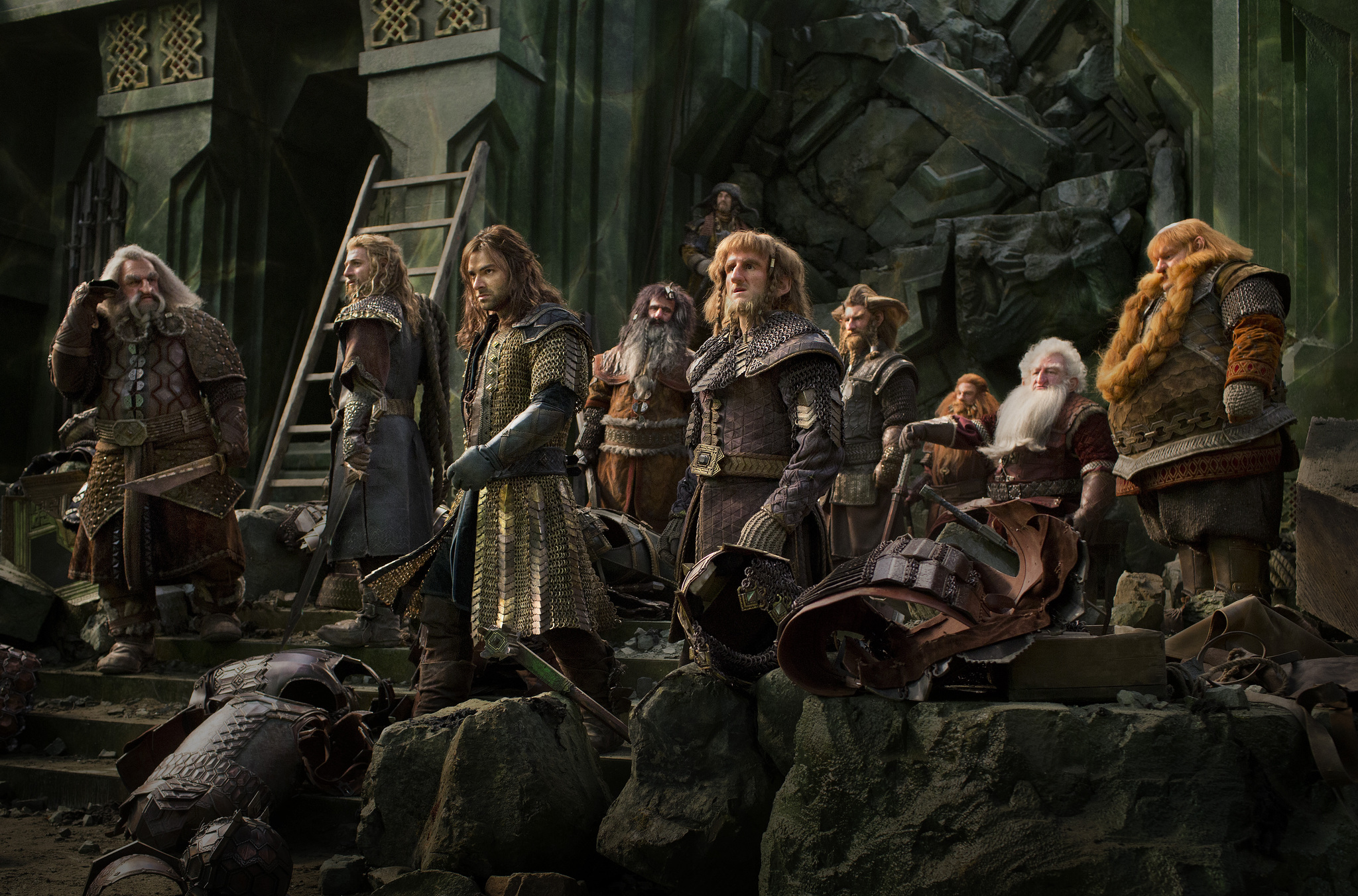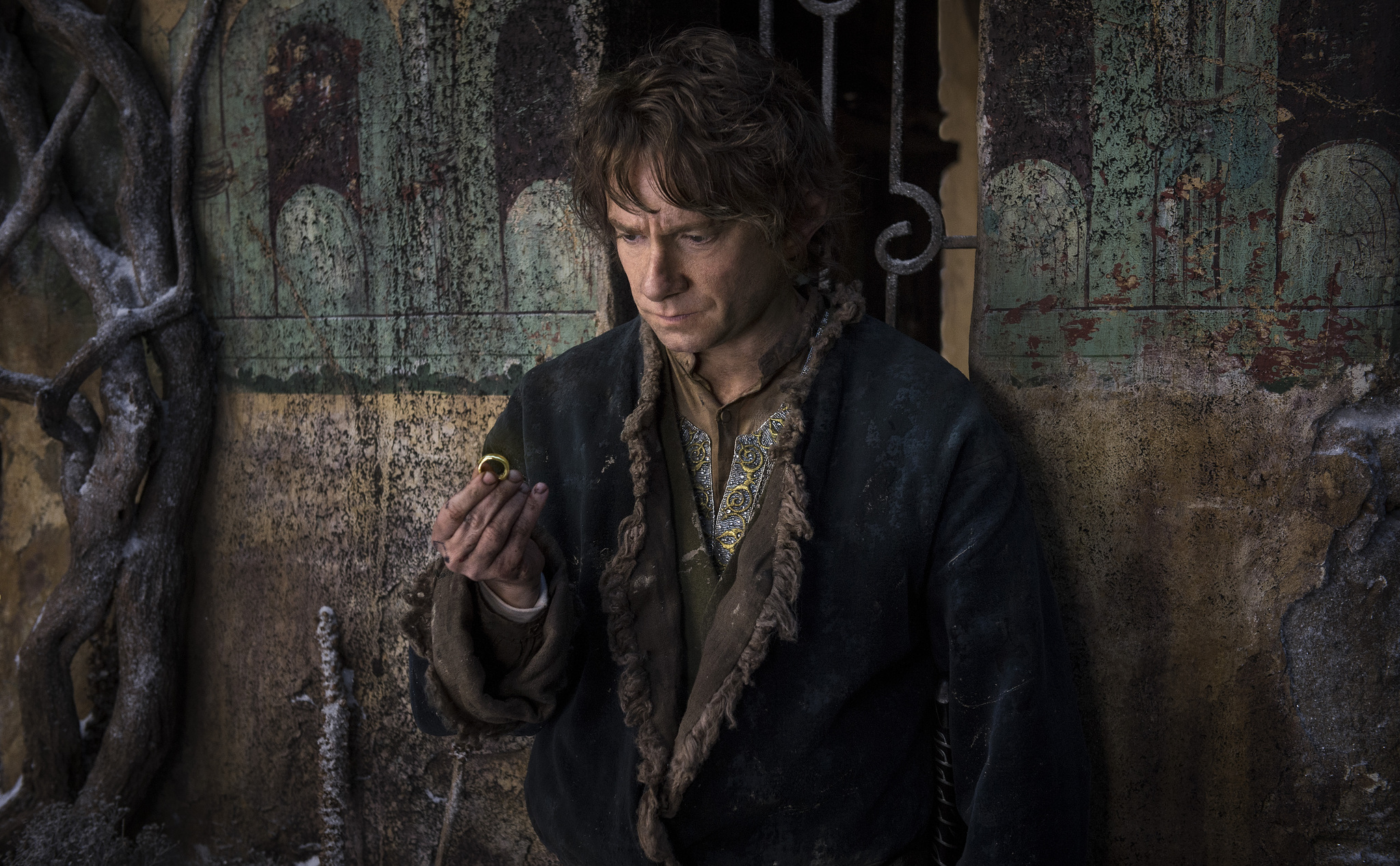🎬 The Hobbit: The Battle of the Five Armies (2014)

🎬 The Hobbit: The Battle of the Five Armies (2014) – A Spectacular Finale to a Legendary Saga
Introduction
The Hobbit: The Battle of the Five Armies (2014) serves as the climactic conclusion to Peter Jackson’s adaptation of J.R.R. Tolkien’s The Hobbit. Picking up immediately after the events of The Desolation of Smaug, this epic fantasy film brings the journey of Bilbo Baggins (Martin Freeman), Thorin Oakenshield (Richard Armitage), and their company of dwarves to a dramatic and action-packed close. With breathtaking visuals, intense battles, and moments of emotional resonance, The Battle of the Five Armies cements the trilogy’s place in the larger Middle-earth cinematic universe.
Plot Summary
The story begins with the devastating attack on Lake-town by the dragon Smaug (voiced by Benedict Cumberbatch). Bard the Bowman (Luke Evans) emerges as a hero, slaying the dragon and saving the survivors. Meanwhile, Thorin and his company reclaim Erebor, the Lonely Mountain, but Thorin succumbs to “dragon sickness,” an insatiable greed for gold that clouds his judgment.
As Thorin obsesses over the Arkenstone, tensions rise among the various factions converging on Erebor. Elves, led by Thranduil (Lee Pace), and men, led by Bard, demand a share of the treasure to rebuild their lands. Dwarven reinforcements, led by Thorin’s cousin Dáin Ironfoot (Billy Connolly), march to Erebor’s defense.
The standoff is interrupted when Azog the Defiler (Manu Bennett) leads an orc army to seize the mountain. What follows is the titular Battle of the Five Armies, where alliances are forged, heroes emerge, and sacrifices are made. Bilbo’s courage and integrity shine as he plays a pivotal role in uniting the factions, while Thorin confronts Azog in a final, fateful duel.
Themes and Analysis
- Greed and Corruption
Thorin’s descent into madness due to dragon sickness illustrates the corrupting influence of greed. His eventual redemption highlights the importance of honor and selflessness over material wealth. - Heroism and Sacrifice
The film emphasizes the cost of heroism, as characters like Bard, Thorin, and Bilbo risk everything for their beliefs. The sacrifices made during the battle serve as a reminder of the toll of war. - Unity in Diversity
Despite their differences, men, elves, dwarves, and even hobbits must come together to combat a common enemy. This theme reflects Tolkien’s belief in the strength of unity against evil. - The Price of War
While the film showcases grand battles, it doesn’t shy away from the devastating consequences of conflict, from the loss of life to the emotional toll on survivors.
Characters and Performances
- Martin Freeman as Bilbo Baggins
Freeman continues to deliver a nuanced performance, portraying Bilbo as a reluctant hero whose courage and wisdom are instrumental in bridging divides. His heartfelt moments bring humanity to the larger-than-life spectacle. - Richard Armitage as Thorin Oakenshield
Armitage excels in portraying Thorin’s tragic arc, capturing his descent into greed and his eventual redemption with emotional depth and intensity. - Luke Evans as Bard the Bowman
Evans brings gravitas and nobility to Bard, establishing him as a relatable and inspiring leader. - Benedict Cumberbatch as Smaug
Though his screen time is brief, Cumberbatch’s menacing voice work ensures Smaug’s presence looms large. - Lee Pace and Billy Connolly as Thranduil and Dáin Ironfoot
Pace’s regal yet cold portrayal of Thranduil contrasts with Connolly’s bombastic and battle-hardened Dáin, adding layers to the political dynamics of the story.
Visuals and Special Effects
The film’s visual effects are a highlight, with Weta Digital delivering stunning battle sequences and breathtaking landscapes. The CGI-heavy armies and creatures, while divisive among fans, contribute to the grand scale of the conflict. The cinematography captures the majesty of Middle-earth, from the snowy peaks of Erebor to the chaos of the battlefield.
Soundtrack and Atmosphere
Howard Shore’s score enhances the film’s emotional and epic moments, blending familiar motifs from The Lord of the Rings with new themes. Tracks like “The Last Goodbye,” performed by Billy Boyd, provide a poignant farewell to the trilogy.
Critical Reception
The Battle of the Five Armies received mixed-to-positive reviews. Critics praised its action sequences and emotional moments but criticized its reliance on CGI and perceived lack of character development. Despite this, the film was a box office success and remains a fan favorite for its connection to the larger Middle-earth saga.
Why The Battle of the Five Armies is a Must-Watch
For fans of epic fantasy and Tolkien’s world, this film offers a satisfying conclusion to Bilbo’s journey while setting the stage for the events of The Lord of the Rings. Its themes of courage, redemption, and unity resonate deeply, making it a fitting end to the trilogy.
Conclusion
The Hobbit: The Battle of the Five Armies is a visually spectacular and emotionally charged finale that honors the legacy of Tolkien’s work. While it has its flaws, its grand scale and heartfelt moments ensure its place as a memorable chapter in Middle-earth’s cinematic history.